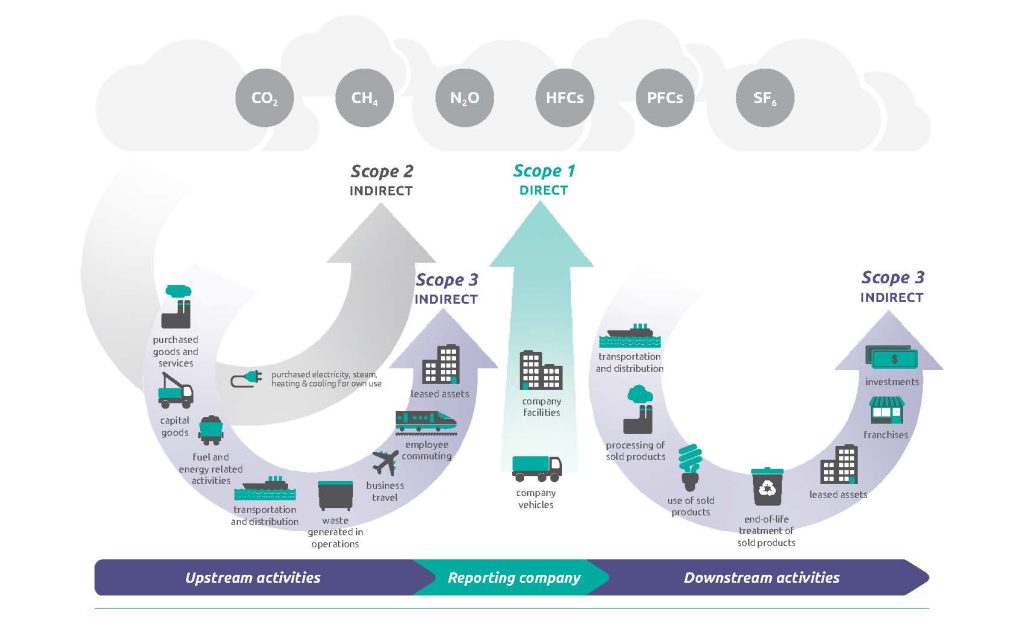GHG Quantification & Inventories
One of the most fundamental steps towards understanding the impacts of climate change and getting started on your net zero journey, is to conduct a greenhouse gas emissions quantification/assessment.
What is GHG quantification?
Simply put, a GHG quantification which can also be referred to as ‘carbon footprint calculation’, is the process of measuring the total amount of GHG emissions that are generated by an activity, project or organisation.
Why quantifying your GHG emissions is important?
- Quantifying GHG emissions, like carbon dioxide (CO2), methane (CH4), and nitrous oxide (N2O), helps understand the sources and amounts of these gases, enabling accurate assessment of their impact on the planet’s temperature and climate patterns.
- Quantifying GHG emissions allows you to set and track progress towards emission reduction goals and decarbonization strategies. This helps identify which sectors or activities are contributing the most to emissions and whether efforts to curb emissions are effective.
- Can lead to cost savings opportunities. For example: by identifying areas of high energy consumption and implementing energy-efficient practices, improving efficiency of supply chain management and eligibility for financial incentives.
Quantifying GHG emissions is a fundamental step in addressing climate change. It provides the data needed to formulate effective policies, track progress, make informed decisions, and work collectively to reduce our impact on the planet.
Emissions can be categorised as direct and indirect emissions based on what an organisation generates through its own operations and emissions generated through its supply chain and consumers.
Direct emissions are those that result from processes/equipment that are owned or controlled by the organisation. This can be further classified into scope 1 and scope 2 emissions
Scope 1 Emissions
Covers emissions from sources that an organization owns or controls directly – for example from burning fuel in fleet of vehicles/burning fuel for running equipment (if they’re not electrically-powered).
Scope 2 Emissions
Covers emissions that an organization causes indirectly when the energy it purchases and uses generates emissions. For example, electricity bought to run offices would fall under this category.
Scope 3 Emissions
It encompasses/includes emissions that are not directly produced by the organization and are not generated from the result of activities of assets owned or controlled by them. For example, employee commuting.
AET’s GHG experts have extensive experience developing GHG inventories for public and private sector clients in accordance with leading industry protocols and standards, including ISO 14064-1 and the WRI/WBCSD GHG Protocol.



